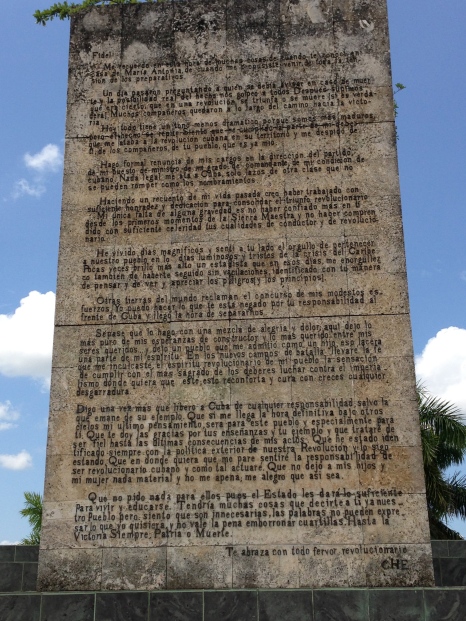Although Trinidad was an “hour” away (when all’s good) from Cienfuegos, we took a detour to Santa Clara that cost us an additional four hours of driving time. Intentional inconvenience is the reason we like to be on the road or rather my crazy addiction to “Schadenfreude”. “FOUR HOURS OF MANIC DRIVING?”, they moaned. It was a road trip after all. Although I agreed about his driving, under my breath, it didn’t feel right missing out on Che Guevara’s Mausoleum. It was worth every kilometer.
We drove through winding roads and long stretches of greenery that undoubtedly put us to sleep. However, frequent intervals of sudden brake slamming that caused the van to lurch forward and sway abruptly woke us out of our reveries. And since we were let down musically by the van’s cassette player that “unexpectedly” failed to operate after visiting Pinar Del Rio, we succumbed to the sound of the engine and Ernesto’s monotonous commentaries. Vladimir cleared the air and sang an acapella version of Carlos Puebla’s elegy to Che “Hasta Siempre Comandante” as we approached his 22 foot bronze statue. Ohhhh, how I loved it! My disgruntled companions loved it too. I did tell them “Guys, it will only get better”. I should have held my breath because the situation in Trinidad did me no justice. Schadenfreude.
The symbolic monument not only housed the remains of Che, but also possessions that represented every aspect of the leader’s life until his death such as his birth certificate, university diplomas, get up, machetes, diaries and black and white photographs to name a few. Located at Plaza de la Revolution, which is where Guevara took the city of Santa Clara in 1958 in the last battle of the Cuban revolution, his statue signified Castro’s high honor of the revolutionary. Engraved at the pedestal of his statue was the farewell letter he had written to Fidel Castro resigning from Cuba’s leadership before he left to fight for his ideology.
We entered the dimly lit mausoleum and shortly felt the power of his legacy. His name was set in a brick wall alongside the name of his comrades who fought the battle in Bolivia; simple yet profound.
“Why did they think that by killing him, he would cease to exist as a fighter? Today he is in every place, wherever there is a just cause to defend. His unerasable mark is now in history and his luminous gaze of a prophet has become a symbol for all the poor of this world.”, declared Fidel Castro as Che’s body had been finally laid to rest.


